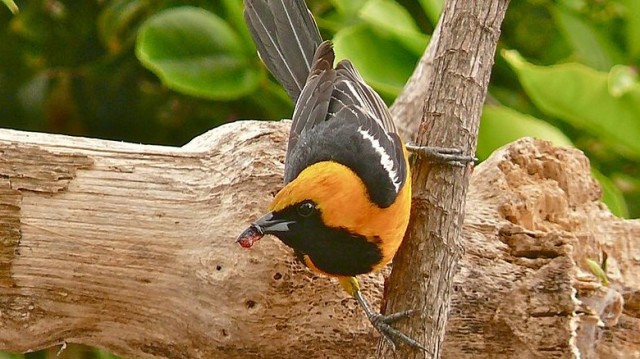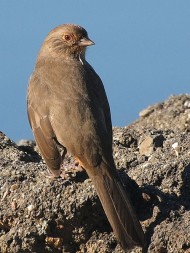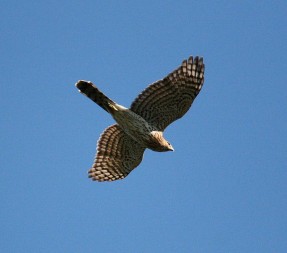Bird-watching forays into our beautiful East Bay Regional Parks are great, and I enjoy volunteering to watch the endangered California Least Terns in Alameda. I also love my backyard. It's filled with a changing kaleidoscope of wild neighbors I’ve gotten to know over the years, including some everyday urban birds and some breathtaking sightings.
I've tried several methods of enhancing my local birding. Alameda already has lots of mature trees scattered over the island that provide great roosting and nesting areas. Seed-filled bird feeders brought in plenty of birds one winter until we developed a rat infestation. We've had better luck improving the habitat for birds by replacing our lawns with more diverse native and drought-tolerant plants. We now have more nectar plants, insects and habitat variety to support them. Nearby palm trees provide nesting space for both Barn Owls and spectacular Hooded Orioles. The orioles migrate from Mexico and Central America to summer as far north as the Bay Area. They visit passionflower vines on our fence and steal nectar, inserting their beak at the base of the flower without pollinating it. Their distinctive calls ring through our neighborhood.
In our backyard ecosystem, we can watch a complete food web in action. From the seed eaters, like Lesser Goldfinch gleaning Cosmos flower seeds, to California Towhees hopping in the leaf litter to find juicy insects. There are even spectacular Cooper’s Hawk chases sometimes ending in birdy meals for the raptors. I recorded one of these encounters in my Bay Island Nature blog.



